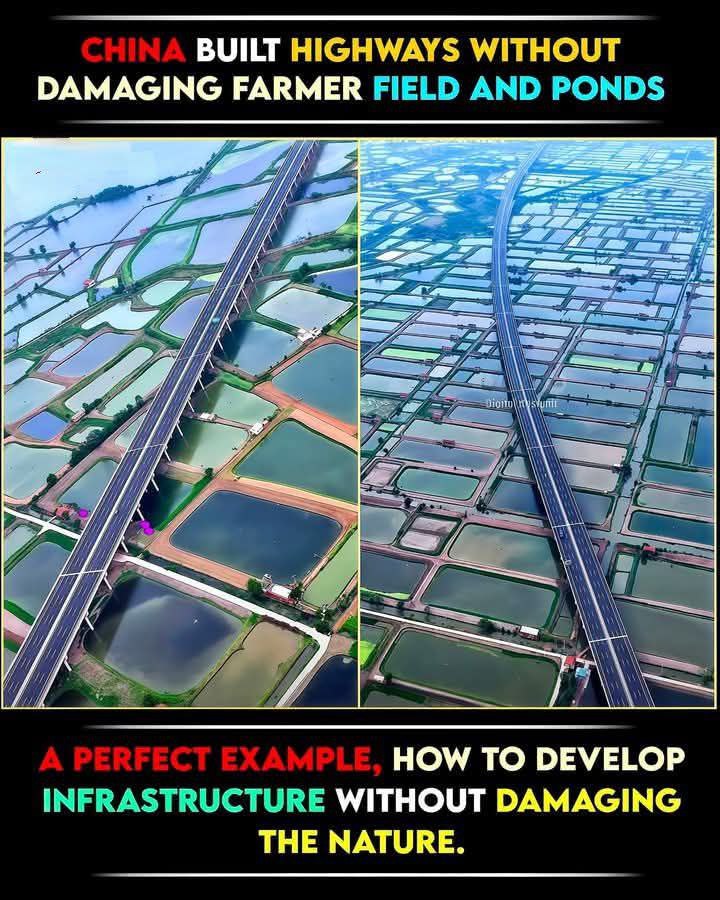China has achieved remarkable progress in infrastructure development while ensuring minimal disruption to nature and agriculture. A prime example of this is the construction of highways that bypass farmers’ fields and ponds, allowing development and the environment to coexist harmoniously.

With a commitment to sustainable progress, China has embraced innovative engineering solutions to preserve farmland and water bodies. Elevated highways, tunnels, and bridges have become key features of road construction, allowing roads to pass over agricultural land without disturbing crops or irrigation systems. These structures not only protect farmers’ livelihoods but also maintain local ecosystems, reducing soil erosion and water pollution.
One such project is the G75 Lanzhou–Haikou Expressway, which passes through the karst landscapes of Guizhou province. Instead of cutting through farms and delicate natural formations, engineers designed elevated sections and tunnels to avoid unnecessary land occupation. Similarly, in Jiangsu province, highway planners ensured that key agricultural zones remained untouched by constructing roads around or above the fields.
This approach reflects China’s broader philosophy of “green development,” where economic growth is pursued alongside environmental protection. Advanced technologies such as drone mapping, satellite imaging, and AI-driven route planning have helped identify the most sustainable paths for new highways. Additionally, compensation programs and ecological restoration efforts ensure that any land affected is rehabilitated or replaced with equivalent farming resources.
By integrating infrastructure with nature, China sets an example for other nations seeking to balance development with environmental stewardship. Its success demonstrates that large-scale modernization does not have to come at the expense of nature, proving that progress and preservation can go hand in hand. 🌱🚧

